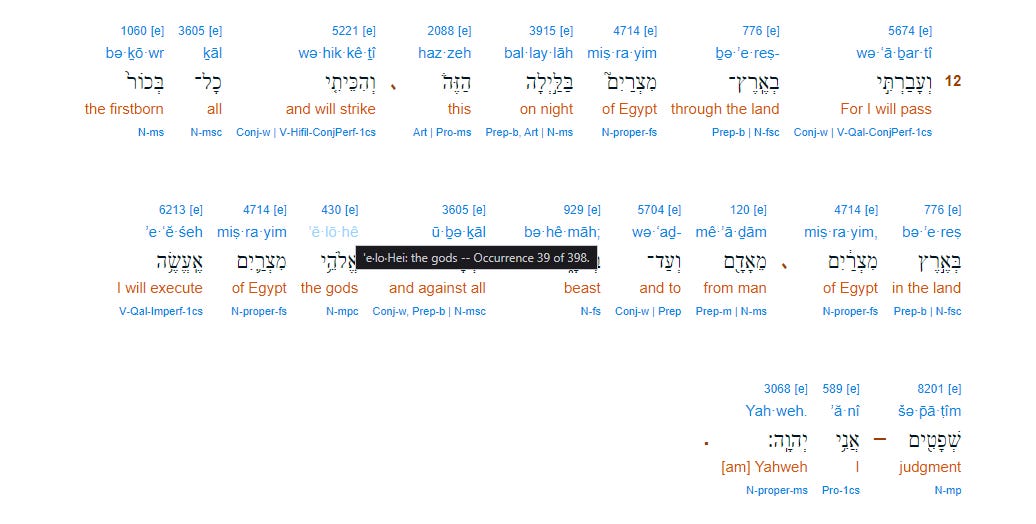Elohim vs. Annunaki: Were the Gods of the Bible Ancient Alien Overlords?
A Thought-Provoking Exploration for Seekers of Hidden Truths.
What if the God of the Bible wasn’t a singular, omnipotent deity—but a council of powerful beings with a hidden agenda? Ancient texts from Mesopotamia to Genesis hint at a startling possibility: the Elohim of the Old Testament and the Annunaki of Sumerian myth might be one and the same. Authors like Mauro Biglino, Zecharia Sitchin, and Matthew LaCroix argue that these "gods" were flesh-and-blood rulers who shaped humanity’s destiny. Let’s dive into the evidence—and the controversy.
1. The Elohim: Plural "Gods" in a Monotheistic Text
The Hebrew word Elohim appears over 2,500 times in the Old Testament. Though traditionally translated as "God," it’s grammatically plural (the "-im" suffix denotes plurality in Hebrew). This linguistic quirk raises questions: Why does a monotheistic text repeatedly use a plural term for the divine?
Key Bible Verses:
Genesis 1:26: “Let us make mankind in our image, in our likeness.”
Who is "us"? If God is singular, why use plural pronouns?
Genesis 3:22: “The man has now become like one of us.”
Genesis 11:7: “Come, let us go down and confuse their language.” (The Tower of Babel)
Exodus 12:12: “I will bring judgment on all the gods [Elohim] of Egypt.”
Mauro Biglino, a translator of ancient Hebrew manuscripts, insists that Elohim refers not to a singular deity but to a group of powerful beings. He argues that later editors of the Bible scrubbed its polytheistic roots to fit monotheistic theology.
2. The Annunaki: Sumeria’s Alien Architects
In Sumerian mythology (circa 4000 BCE), the Annunaki (“those of royal blood”) were deities who descended from the heavens to Earth. According to tablets like the Enuma Elish and the Atrahasis Epic, they:
Created humans as a slave race to mine gold (Sitchin’s 12th Planet theory).
They were led by the sky god Anu and his sons, Enki and Enlil.
Governed cities, demanded worship, and waged wars.
The parallels to the Elohim are uncanny:
Creation of Humanity: Both the Annunaki (clay + divine blood) and Elohim (“dust + breath of life”) genetically engineered humans.
Divine Councils: The Annunaki held assemblies to decide humanity’s fate, mirroring the Elohim’s plural language in Genesis.
Judgment and Flood: The Sumerian flood myth (via Enki) and Noah’s Ark (Genesis 6-9) both describe gods wiping out humanity—then regretting it.
3. The Smoking Gun: Shared Motifs
A motif is like a hidden pattern or repeating idea that shows up across stories, myths, or symbols to point us toward deeper truths. Think of it as a clue that keeps appearing—whether in ancient myths, sacred texts, or even nature—to help us recognize universal themes.
A. The Sons of God and the Daughters of Men
Genesis 6:1-4: “The sons of God [Bene HaElohim] saw that the daughters of humans were beautiful… and bore children to them.”
Sitchin linked this to Annunaki interbreeding with humans, creating hybrid rulers (the Nephilim).
B. Divine Technology or Magic?
The Ark of the Covenant (Exodus 25) is described as a deadly “radioactive” device (Biglino), akin to Annunaki “MEs” (divine blueprints for tech).
Ezekiel’s “wheel within a wheel” (Ezekiel 1:15-21) mirrors Sumerian depictions of flying “divine chariots.”
C. Competing Gods
Yahweh is called “El Elyon” (Most High God) in Psalm 82:1, presiding over a council of Elohim. Similarly, Anu ruled the Annunaki pantheon.
4. The Controversy: Scholars vs. Rebels
Mainstream academia dismisses these parallels as fringe, arguing that:
Elohim is a “plural of majesty” (like the royal “we”).
Sitchin’s translations of Sumerian texts are speculative.
The Bible’s monotheism evolved from Canaanite polytheism, not Annunaki lore.
Yet dissident researchers counter:
Why do Dead Sea Scrolls and older Hebrew texts use Elohim more ambiguously?
Why do Sumerian kings list Annunaki as their literal ancestors?
Why does Yahweh demand exclusive worship if no other “gods” exist (Exodus 20:3)?
Conclusion: Rewriting Ancient History
If the Elohim and Annunaki are connected, it rewrites everything we know about religion, history, and humanity’s origins. Were they aliens, as Sitchin claimed? Advanced beings, as Biglino argues? Or mere myth? Either way, the Bible’s cryptic plural language, and Sumer’s clay tablets suggest a forgotten truth: the gods were never alone.
What if faith is the echo of a memory—a time when “divine” rulers walked the Earth?
5. Join the Journey: Building a Community of Seekers
This article is the first step in a larger exploration. My name is Otene, which means “He who searches—and finds” in Idoma, a language of Benue State, Nigeria. Like Tehuti (Thoth), the ancient African sage of wisdom and writing, I am driven to uncover hidden truths and share them with the world.
What’s Next?
Subscribe to this newsletter for weekly deep dives into ancient mysteries, forgotten histories, and universal principles.
Engage in the comments: What do you think about the Elohim-Annunaki connection?
Stay tuned for my upcoming book on the Universal Principle of Cause and Effect, where I’ll explore how understanding these laws can transform us into conscious creators of our reality.
Call to Action
Subscribe to The Seeker’s Scroll for free.
Share this post with fellow truth-seekers.
Comment below: What ancient mystery should we explore next?
Together, let’s uncover the secrets of the past—and use them to shape a brighter future.
References:
Mauro Biglino, The Bible’s Buried Secrets
Zecharia Sitchin, The Earth Chronicles
Sumerian tablets: Enuma Elish, Epic of Gilgamesh, Atrahasis
Old Testament Interlinear Scriptures: Genesis, Exodus, Psalms, Ezekiel






